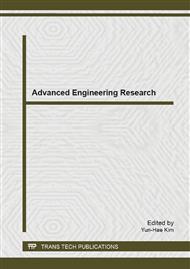p.146
p.150
p.165
p.171
p.176
p.183
p.189
p.193
p.198
Research on Micro-Pool Drill and its Drag Reduction Effect
Abstract:
To the problem that drills are easy to break off during working, apply micro-pool lubrication technology in the field of drill cutting. Drill a micro hole with a diameter of 70μm, a depth of 30μm and a space of 100μm on the oblique plane of the front-end blade of a common drill with HDM-50 semiconductor side pump YAG laser to form a micro-pool drill which constitutes a contrast group with a common drill. Lubricate both of the two kinds of drills with 2# micro high pressure lithium grease and use them to drill holes on a 25mm A3 plate. The experiment indicates that: when the depth of the processed holes are 5mm, the average powers of the micro-pool drill at the speeds of 600R/min, 850R/min and 1100R/min are 3.243% higher than those of the common drill; and the average power of the micro-pool drill is 4.547% lower than that of the common drill when the depth is 12mm; and the average power of the micro-pool drill is 4.09% lower than that of the common drill when the depth is 22mm.
Info:
Periodical:
Pages:
176-182
Citation:
Online since:
April 2014
Authors:
Keywords:
Price:
Сopyright:
© 2014 Trans Tech Publications Ltd. All Rights Reserved
Share:
Citation:


